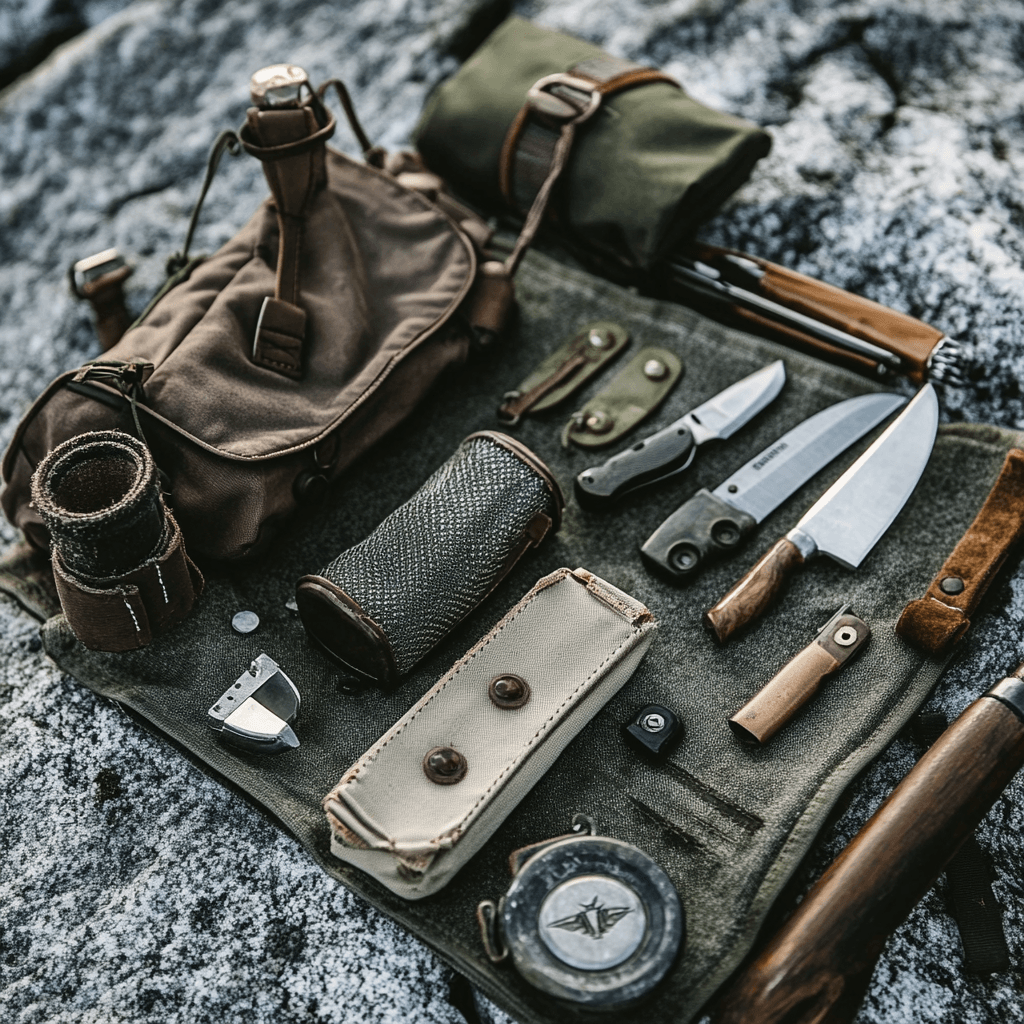
Introduction: Your Gateway to Wilderness Confidence
Picture this: You're standing at the edge of a vast, untamed wilderness. The trees whisper ancient secrets, and the landscape stretches before you—both beautiful and potentially dangerous. Survival isn't just about conquering nature; it's about understanding, respecting, and working with the environment around you. Whether you're an adventure seeker, a weekend warrior, or someone preparing for the unexpected, this comprehensive guide will transform your wilderness survival skills from novice to knowledgeable.
Why Wilderness Survival Skills Matter
In a world of smartphones and instant connectivity, the ability to survive in the wilderness might seem like a forgotten art. But nature doesn't care about your cell service or GPS signal. Emergencies happen—unexpected storms, getting lost on a hiking trail, or facing unexpected challenges far from civilization. Wilderness survival skills are your lifeline when technology fails and nature tests your limits.
Essential Wilderness Survival Skills Every Beginner Should Know
1. Shelter: Your First Line of Defense
Survival starts with protection. A good shelter does more than keep you dry—it shields you from wind, cold, and potential wildlife encounters. Here's how to master shelter creation:
Natural Shelter Techniques:
Learn to read the landscape. Look for:
- Natural overhangs
- Dense tree clusters
- Rock formations that provide windbreaks
Emergency Shelter Construction:
1. Collect branches, leaves, and pine boughs
2. Create a frame using sturdy branches
3. Layer materials for insulation
4. Ensure your shelter is small and compact to retain body heat
Master the art of constructing emergency shelters suited for any environment—explore comprehensive techniques here.
Pro Tip: The MSR Access Tent (our top product recommendation) offers a lightweight, reliable option for those who prefer professional-grade shelter solutions.
2. Water: The Liquid of Life

Building warmth: Preparing a campfire in the wild.
You can survive weeks without food, but only days without water. Knowing how to find and purify water is crucial:
Water Procurement Techniques
Natural Water Sources:
- Flowing streams
- Morning dew collection
- Plant transpiration bags
- Snow and ice melting
Water Purification Methods
1. Boiling: The most reliable purification method
2. Chemical Treatment: Iodine or chlorine tablets
3. Filtration: Portable filters like the LifeStraw Personal Water Filter
Learn essential water purification methods to stay hydrated safely in the wild—discover techniques here.
Safety Note: Always assume wild water is contaminated. Purification is non-negotiable.
3. Fire: Your Survival Multiplier
Fire provides warmth, cooking capability, water purification, and psychological comfort. Multiple fire-starting methods are crucial:
Fire Starting Techniques
- Friction-Based Methods:
- Bow drill
- Hand drill
- Flint and steel
Modern Tools:
- Pyro Putty Fire Starter (our recommended product)
Survival Hack: Always carry multiple fire-starting methods. Redundancy saves lives.
4. Navigation: Finding Your Way Without Technology

Finding your way: Navigation without technology
GPS fails. Batteries die. Your navigation skills are your true compass:
Wilderness Navigation Skills
Natural Navigation Techniques:
Sun position tracking
Star navigation
Moss growth direction
Terrain feature recognition
Essential Tools:
Compass
Topographic maps
Basic orienteering skills
5. Food Procurement and Identification

Nature’s pantry: Identifying edible plants.
While you can survive weeks without food, understanding basic foraging and hunting keeps your energy levels stable:
Survival Food Strategies
Safe Foraging:
Learn 100% identification of edible plants
Understand local flora
Carry a comprehensive field guide
Primitive Hunting/Trapping:
Simple snare techniques
Understanding animal tracks
Basic fishing methods
Identify and safely forage for edible plants with confidence—start your journey here.
6. First Aid and Emergency Preparedness

Essentials for survival: Tools you can trust.
Your most important survival tool is knowledge. A comprehensive first aid kit and medical understanding can be life-saving:
Essential First Aid Considerations
Must-Have First Aid Kit Items:
- Bandages
- Antiseptic wipes
- Pain relievers
- Emergency blanket
Critical First Aid Skills:
- Wound cleaning
- Splinting
- Hypothermia prevention
- Basic wound closure techniques
Recommended Product: Adventure Medical Kits Ultralight/Watertight .5 First Aid Kit
Learn essential wilderness medicine skills to manage injuries and illnesses—read more here.
7. Survival Mindset: Your Greatest Weapon
Psychological resilience often determines survival more than physical skills:
Mental Survival Strategies
Stay calm
Maintain positive thinking
Make rational decisions
Conserve energy
Practice mindfulness techniques
Conclusion: Your Wilderness Journey Begins Now
Wilderness survival isn't about being a superhero. It's about preparation, respect for nature, and continuous learning. Every skill you master brings you closer to confidence and safety in the great outdoors.
Your Next Steps
1. Practice these skills in controlled environments
2. Take wilderness survival courses
3. Invest in quality gear
4. Never stop learning
Remember: The wilderness doesn't care about your experience—it cares about your preparation.
Gear Up, Stay Safe, Explore Confidently
Are you ready to transform from a wilderness novice to a confident explorer? Your adventure starts now.
Disclaimer: Always prioritize safety. These techniques are for educational purposes, and professional training is recommended for serious wilderness exploration.
Product Recommendations to Get You Started
Survival is a journey, not a destination.
AATF Survival does not agree with all the statements provided in the given content.
Your source for expert survival strategies and emergency preparedness tips.
Privacy policy | Terms of use | Cookies

